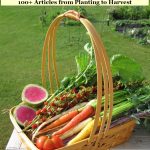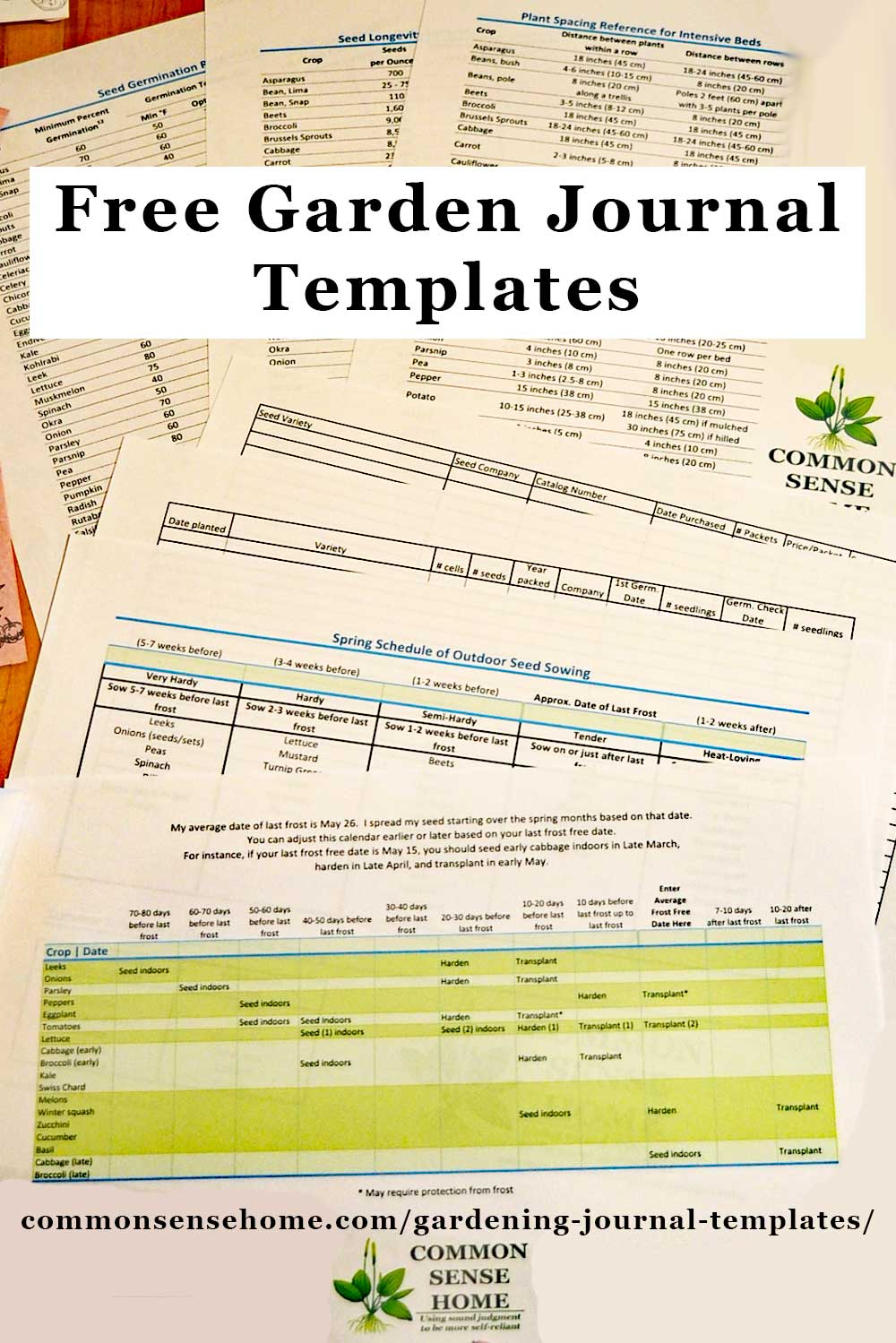Gardening – Home Garden Ideas from Planting to Harvest
Gardening has enjoyed a resurgence in recent years, with folks tackling everything from small container gardens to large scale permaculture landscape transformations. No matter what your growing space or budget, if you’re willing to invest some time and effort, you can get a harvest.
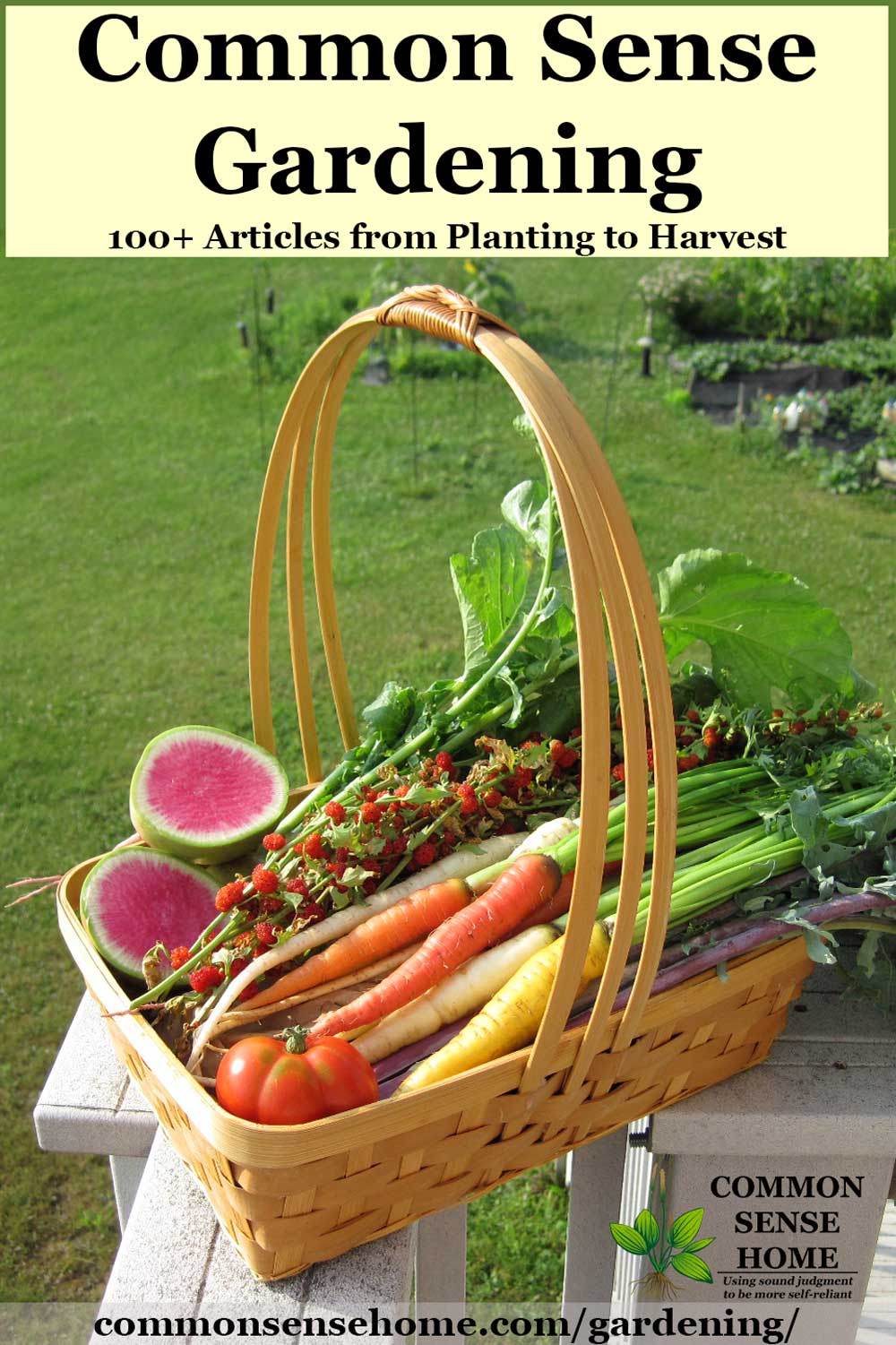
My home garden is in northeast Wisconsin, zone 4/5, about 15 miles from Lake Michigan. Our winters are somewhat tempered by the lake, but our location along the Niagara Escarpment puts us in one of the windiest areas of Wisconsin.
Our last frost date is generally around mid-May, our first frost date often hits mid-September. There are also some articles from my brother in zone 3, and my friend, Amber, in zone 8.
We’ll continue to add to the gardening posts as time and inspiration allow, but if you have a specific question or request, please leave a comment and let us know!
With your subscription to Common Sense Home, you’ll get free access to the Common Sense Home Garden Planning Kit, which includes:
- Seed purchase log
- Planting and Germination record
- Seed Starting and Transplanting Calendar
- Customizable seed sowing schedule
- Seed longevity chart
- Seed germination rates after storage
- Plant spacing chart
You’ll also get regular updates throughout the year with gardening and food preservation tips in our weekly newsletter, and the opportunity to share your ideas for upcoming gardening courses.
Getting Started Gardening
Is your gardening goal to feed your family or have a few fresh tomatoes, or something in between? The bigger your goals, the more time you’re likely to need to spend in the garden.
I suggest starting small and scaling up, focusing on some of your favorite crops. Herbs and flowers should be welcome in every garden, even if you don’t use them for cooking. They often help repel pests and create a habitat for pollinators.
How to Start a Garden – 10 Steps to Gardening for Beginners
Free Gardening Journal Templates and Other Garden Record Keeping Tips
Companion Planting in the Garden (The Easy Way) – Includes Printable Chart
Small Garden, Big Yield – 10 Tips for a Great Harvest
Introduction to Aquaponics: Growing Fish and Vegetables Together
Phytophotodermatitis – Plants That Cause It, How to Treat It
Bumblebee – Super Charged Pollinator for Your Yard and Garden
Soil Health and Fertilizers
Soil Testing – 5 Easy Tests for Your Yard and Garden
Organic Fertilizer – Feed Your Plants, Soil and Microbes
Composting 101 – Easy Compost Making and Troubleshooting Tips
Music for Plants – What Helps Plants Grow and What Doesn’t
The Right Way to Use Wood Ash in the Garden
Seed Starting
Some crops are best direct seeded in the garden, and some do better as transplants. Which crops fall into each category will also vary depending on your growing conditions.
As a northern garden, I start many of my heat loving plants inside. I love having plants growing while waiting (somewhat impatiently) for spring.
Starting my own seeds also allows me to choose from a much wider array of plant varieties, including hard to find heirlooms and rare plants.
Build Your Own Simple Seed Starting Shelves
Starting Seeds Indoors – 11 Steps to Help You Plant Seeds with Confidence
10 Heirloom Seed Companies You Don’t Want to Miss
When Should I Start My Seeds? Printable seed starting calendar
Grow Tomatoes from Seed – Save Money, Get More Varieties
How to Store Seeds (for Next Year or Long Term)
How Long do Seeds Last? (with Printable Seed Viability Charts for Veggies, Herbs, and Flowers)
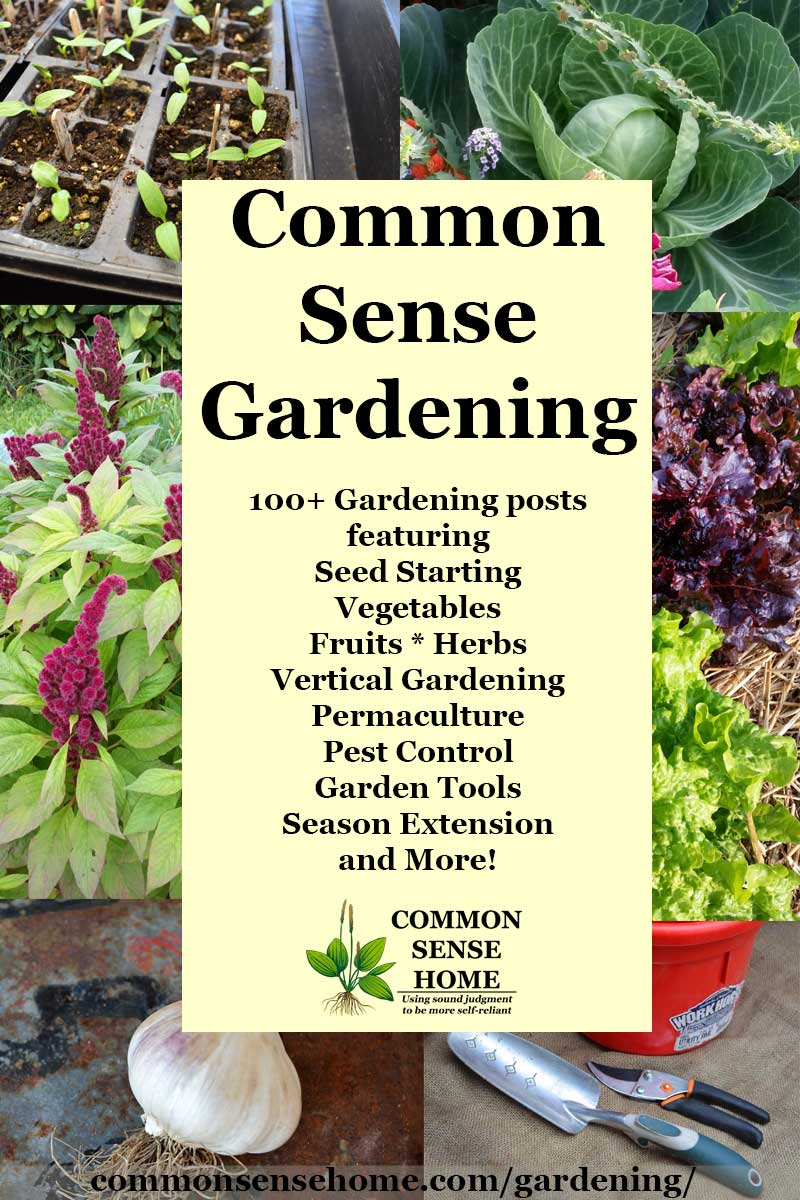
Vegetable Garden
Veggie gardens are probably what most people first think of when they think “home garden”, and for good reason. With only a modest commitment of growing space and effort, you can pick your first harvest in a matter of weeks.
Some crops mature more quickly (like salad greens and radishes), some require more time (like parsnips and pumpkins). Check the “Date to Maturity” listed on the seed package for an estimate of time to harvest.
I’ve grouped asparagus and rhubarb with the veggies, even though rhubarb can be used in both savory and sweet recipes. Tomatoes are also here, since they are typically used more like a vegetable than a fruit.
Pepitas (hulless pumpkin seeds) also get to go with the veggies, since to grow the seeds, you need to grow the right pumpkins.
18 Fastest Growing Vegetables (Indoors, Garden, Containers)
Summer Gardens – Dealing with High Temperatures in the Garden
Too Much Rain in the Garden – Managing Wet Dirt and Waterlogged Plants
Damaged Crops – What to Do When Hail and Wind Damage Your Garden
Growing Asparagus – Planting, Care and Harvesting a Perennial Favorite
5 Tips to Grow Bigger Broccoli Heads
How to Grow Lots of Pole Beans for Easy Picking and Preserving
Growing Carrots – Quick Guide, Step by Step Instructions and Carrot Q&A
Growing Onions from Seed – 5 Tips for a Great Harvest
Planting and Growing Peas – What You Need to Know
Grow Your Own Pepitas (Hulless Pumpkin Seeds)
Growing Potatoes the Easy Way – Potato Towers
The Complete Guide to Growing Rhubarb
Strawberry Spinach – Add Some Variety to Your Salads
Before You Plant Sunchokes, You Need to Read This Post
Tomatoes
Types of Tomatoes (Best Uses, Flavors, Plant Sizes)
How to Grow Lots of Tomatoes Organically, Plus Innovative Gardening Techniques
Tomato Flowers But No Fruit, or No Tomato Flowers – 9 Troubleshooting Tips
4 Reasons your Tomatoes Aren’t Ripening
7 Steps to Stop Blossom End Rot & Get Rid of Black Bottomed Tomatoes
How to Ripen Green Tomatoes at the End of the Season
How to Save Tomato Seeds – Easy to Follow Guide
Fruit Garden
Homegrown fruit is wonderful, but it often takes a more long term commitment. Our perennial fruit crops are still young, so I’ll be adding to this section as they come to maturity.
Growing Blueberries – Quick Guide and Master Grower’s Tips
How to Grow Elderberries for Food and Medicine
How to Grow the Best Raspberries You’ve Ever Tasted
How to Tell Watermelon is Ripe – 4 Tips for Picking Good Watermelon
Herb Garden
Most of the herbs I’ve grown over the years have done well with little help from me. I tend to tuck them here and there in my vegetable gardens, orchards and wherever else there’s room. If you have a specific herb growing request, let me know.
Herb Garden Ideas – Fun and Functional
Borage – Growing Tips and Uses
How to Grow Garlic – From Planting to Harvest
Grow Stevia and Make Your Own Liquid Sweetener
Sage Benefits for Home, Health & Personal Care
Vertical Garden
Because of our strong winds, any vertical gardening I do has to be very sturdy. I can’t take advantage of as many options as someone in a more sheltered location, but I still make use of trellises and other plant supports to maximize my gardening productivity.
Raised Garden Beds – 5 Steps for Surefire Success
11 Vertical Gardening Advantages
Vertical Vegetable Garden Ideas (Over 20 Photos)
5+ Terrific Tomato Trellis Ideas
5 Reasons the VineSpine™ is the Best Garden Trellis
Garden Tools and Equipment
Self Watering Planters – DIY Demo, How They Work, Tips for Use
Compost Tumblers – Pros and Cons – Best Tumbling Composters
Cleaning and Sharpening Garden Tools
My Favorite Gardening Tools – Save Time, Boost Yields, Enjoy Gardening More
Digz Gardening Gloves – Review and Tips for Use and Care
5 Ways a Roo Gardening Apron Makes Gardening Easier
Rainwater Harvesting Guide – Rain Barrels, Maintenance and More
Pest Control
My first level of pest control is to try and get everything growing so healthy the pests don’t bother it much.
Unfortunately, gardening happens – drought conditions, extreme heat or cold, too much rain or other plant stress creates conditions favorable to garden marauders. Usually some minor intervention and TLC gets things back on track and saves the harvest.
Blueberry Netting Tips – Protecting Blueberries from Birds (& Deer)
Attracting Beneficial Insects for a Better Garden
The Ultimate Guide to Natural Pest Control in the Garden
Duck Pest Control – Working with Ducks in the Garden
Flea Beetle Control (with Tips for Saving Damaged Plants)
Homemade Bug Spray for the Garden – 3 Easy Recipes
6 Ways to Use Garlic in the Garden
Keep Deer Out of Your Garden – 5 Deer Deterrent Strategies
Papaya Ringspot Virus in the Garden – Control and Prevention
Eating Bugs – Free Food from Your Backyard
Permaculture
Permaculture is more than a gardening style, it’s a way of life. Based on the root words of “permanent culture” or “permanent agriculture”, it uses a systems approach with a heavy reliance on perennial plantings.
The design ethics combine earth care, human care and return of abundance or surplus. The soil is protected and enriched, not destroyed. Water is gathered and filtered, recharging aquifers.
Sound impossible? People are applying the principles around the planet – with amazing results. We’ve only just begun changes on our land, and already I can see a notable difference.
Permaculture Design Elements – 3 Keys You Need to Know
Self- Reliance Starts at Home – Introduction to The Permaculture Student
Sustainable Methods for Dealing with Drought
Our Homestead Permaculture Project – Site Overview
Holzer Permaculture – A Lifetime of Food Growing Innovation
The Minimalist Gardener – Gardening with Less Work and Fewer Inputs
Biochar – Amazon Secret Rediscovered
Beyond the War on Invasive Species – A Permaculture Approach to Ecosystem Restoration
Sustainable Methods for Dealing with Drought
Season Extension
With a little protection, cold climate gardeners can get a jump on spring planting and not be “stopped cold” by fall frost. We have a small attached greenhouse, a larger detached greenhouse and a couple of cold frames to help with season extension.
Plant Hardiness Zones and Microclimate – Creating Your Best Garden
Protecting Plants from Frost – 12 Ways to Beat the Cold Weather
Build a Secure Greenhouse Foundation That Preserves Your Growing Space
The Practical Greenhouse Guide – What You Need to Know Before You Build a Greenhouse
Indoor Garden – 12 Reasons to Grow Organic Food Indoors
Crop Storage
You don’t have to grow year round to eat year round from the garden. A number of crops lend themselves to easy storage “as is” when properly cured.
Some require cool temps and high humidity, others store fine at regular room temp. Parsnips are a favorite of mine, as they overwinter right in the ground. As soon as the ground thaws in spring, we have one of our “first” garden harvests of the season.
The 5 Easiest Vegetables to Store
Above Ground Root Cellars – Enjoy Your Local Produce Longer
Build Your Own Walk In Cooler with a CoolBot Controller and A/C Unit
How to Harvest, Cure and Store Onions
When to Harvest Pumpkins (and the Best Ways to Store Them)
What are shell beans? (Growing Tips, Usage, Storage)
How to Store Potatoes Long Term
Parsnips – Growing, Harvesting, Use & Cautions
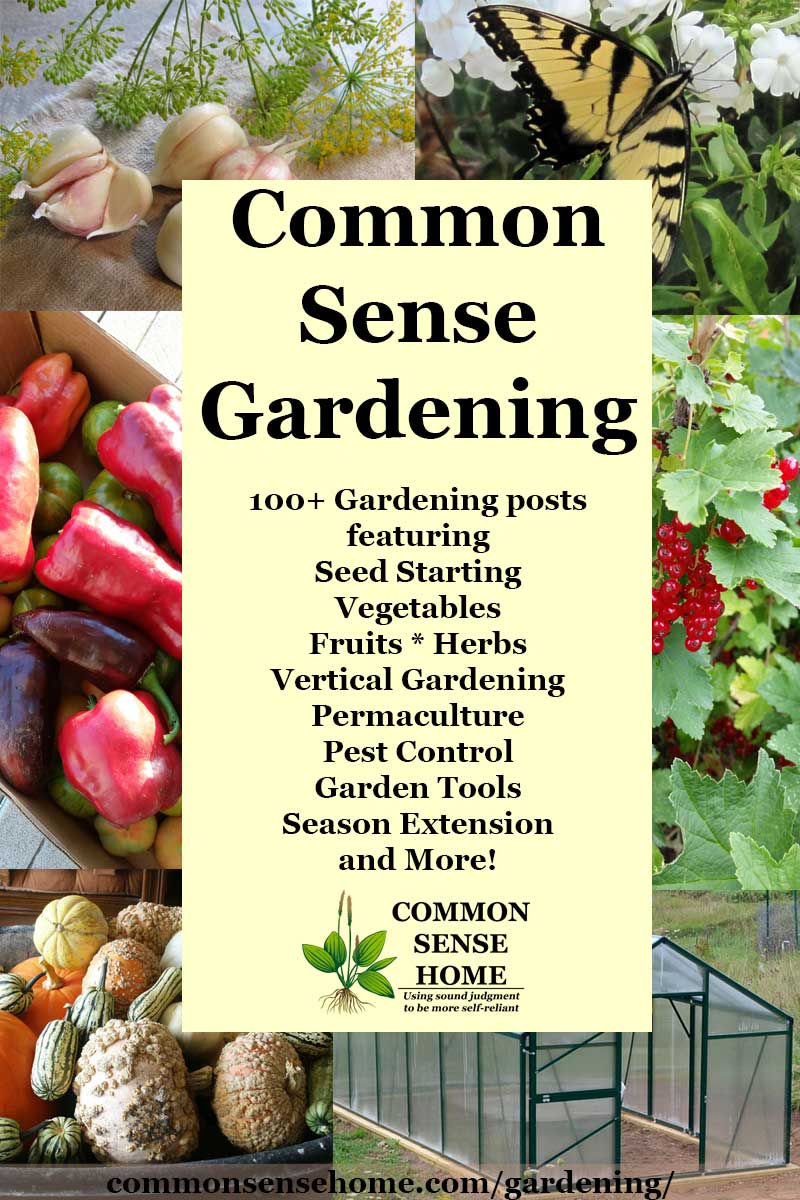
Preserving the Harvest
Some crops require a little more effort to enjoy in the off season, but once you taste the difference in homegrown fruit and vegetable quality, you’ll be hooked. Our family uses a variety of food preservation techniques, for a variety of flavors and textures.
Home Food Preservation – 10 Ways to Preserve Food at Home
How to Can Food at Home – Quick Guide to Safe Home Canning
Home Food Drying – 6 Things You Need to Know to Dehydrate Food at Home
Home Freeze Drying – The Good, The Bad and The Ugly
How to Freeze Peas from the Garden
How to Grow and Cook Nutrient Dense Foods
How to Infuse Herbs in Oil, Water, Vinegar, Alcohol or Honey
Don’t forget to check out the recipe page for recipes that use fresh garden produce, including canning and preserving instructions for several crops.
Home Garden Inspiration
Musings and ideas, why “soil” is more than “dirt” and tips for our winged friends and other wee beasties.
Garden Gifts They’ll Love – Practical, Beautiful and Unique
5 Tips for a Bee Friendly Yard
Dirt Therapy – 8 Reasons You Need to Have a Garden
5 Reasons I Want Weeds in My Garden
Confessions of a Messy Gardener
What if I Told You Weeds and Bacteria Could Save Your Life?
Giant Vegetables – How Big Do the Record Holders Get?
Stop the Dandelion Madness! Making Peace with Dandelions and Bees
What is terroir? (And Why You Want to Know)
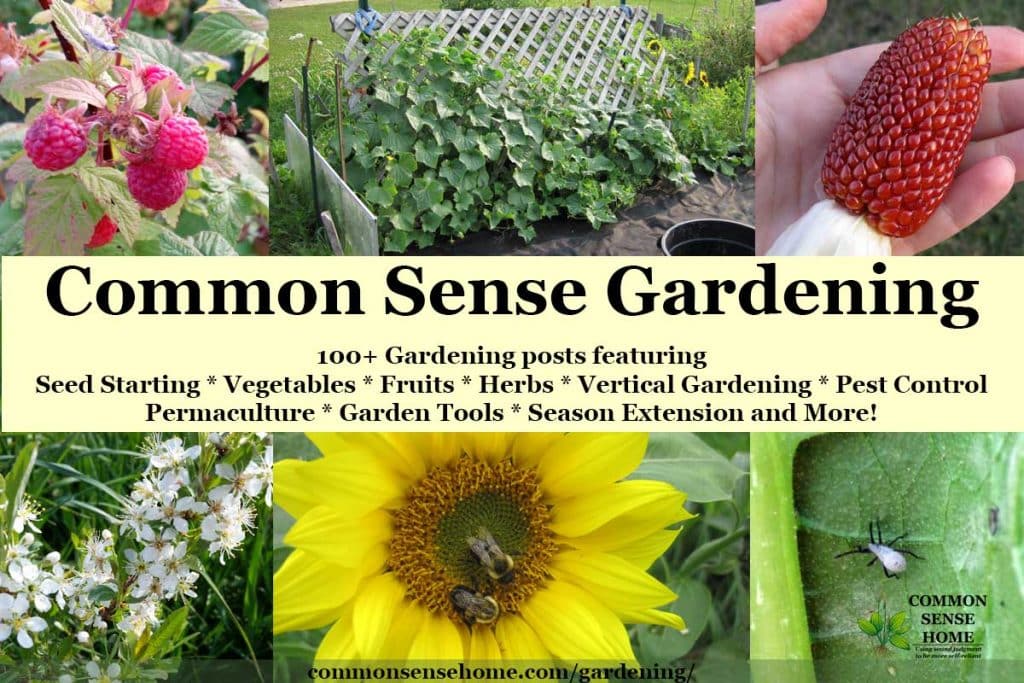
Gardening Book Reviews
Edible Landscaping with a Permaculture Twist
Building Soils Naturally – Innovative Methods for Organic Gardeners
Working with Nature – Shifting Paradigms and The Essence of Organic Gardening
The Planet Whizbang Idea Book for Gardeners
The Bio-Integrated Farm – Water Gardening Like You Never Imagined
Restoration Agriculture: Real World Permaculture for Farmers
The Market Gardener: A Successful Grower’s Handbook for Small-Scale Organic Farming
The BackYard Orchardist – Learn to Grow Over 10 Different Fruits
Wildcrafting – Using Your Weeds
Although not standard “garden” elements, my weeds are also harvested for culinary and medicinal use. You can view the Weekly Weeder and Herbal Posts for more ideas on how to put your weeds to work.
Originally posted in 2012, last updated in 2019.

